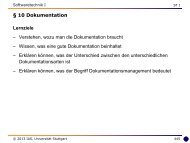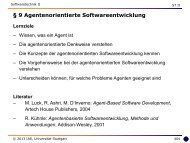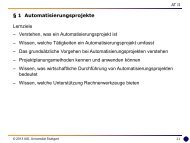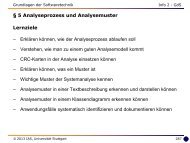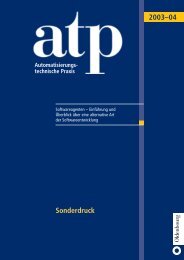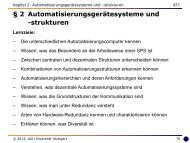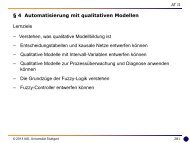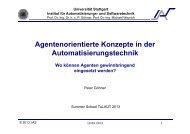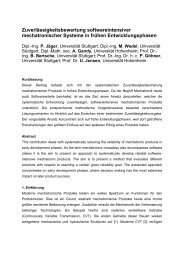Grundlagen FlexRay - Institut für Automatisierungs- und ...
Grundlagen FlexRay - Institut für Automatisierungs- und ...
Grundlagen FlexRay - Institut für Automatisierungs- und ...
Create successful ePaper yourself
Turn your PDF publications into a flip-book with our unique Google optimized e-Paper software.
<strong>Gr<strong>und</strong>lagen</strong> <strong>FlexRay</strong> BasicsV 1.1 29<br />
since it is shortened by every Bus Driver for latency reasons. After that, the Frame Start<br />
Sequence (FSS) starts, which is used as a safety buffer against quantization error while bit<br />
sampling.<br />
After that, the actual frame starts. In front of every byte, a Byte Start Sequence (BSS) is<br />
transmitted, to help bit synchronization. After the last byte, the static frame is delimited by an<br />
Frame end Sequence (FES).<br />
In Figure 2.25 and Figure 2.26 you can also see the signals TxD and TxEN, which are<br />
generated by the Communication Controller while transmitting.<br />
In a frame in the dynamic segment (Figure 2.26), the FES is followed by a Dynamic Trailing<br />
Sequence (DTS).. It is a Low phase with variable length, which extends every frame until the<br />
next Media Access Control (MAC), to enable an exact assignment to the Minislot-ID. The<br />
dynamic frame is delimited by the High bit of the DTS. The bus goes to Idle level after that.<br />
Figure 2.26 Dynamic Segment [FRPS05]<br />
Bäurle 12.10.2012




